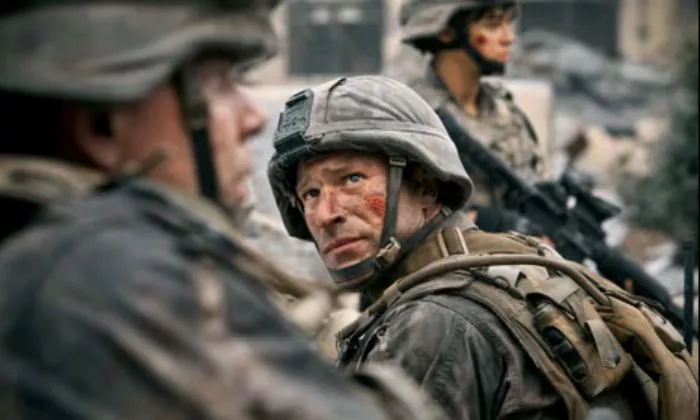“Battle: Los Angeles” is a 2011 science fiction action film directed by Jonathan Liebesman that takes viewers on an adrenaline-fueled ride through an epic battle between humanity and extraterrestrial invaders. From its conception to its final release, the film went through a complex and fascinating filmmaking process that involved a talented cast and crew, cutting-edge visual effects, and meticulous attention to detail. In this comprehensive introduction, we’ll explore the journey of “Battle: Los Angeles” from its inception to its cinematic debut, examining the key elements of its filmmaking process.
Conceptualization and Development
The genesis of “Battle: Los Angeles” can be traced back to the creative minds of its writers and producers who envisioned a high-octane sci-fi action film set against the backdrop of an alien invasion. Screenwriter Christopher Bertolini penned the original script, drawing inspiration from classic alien invasion narratives while infusing the story with a contemporary twist. The film’s producers, including Neal H. Moritz and Ori Marmur, recognized the potential of Bertolini’s script and began developing the project with an eye towards creating a visually stunning and emotionally resonant cinematic experience.
Casting and Character Development
As the project gained momentum, the filmmakers turned their attention to casting the ensemble of characters who would bring the story of “Battle: Los Angeles” to life. Aaron Eckhart was tapped to lead the cast as Staff Sergeant Michael Nantz, a seasoned Marine haunted by past failures and determined to redeem himself in the eyes of his men. Joining Eckhart were a talented ensemble of actors, including Michelle Rodriguez as Air Force Tech Sergeant Elena Santos, Ramon Rodriguez as Corporal Kevin Harris, and Bridget Moynahan as Michele, a civilian caught in the crossfire of the alien invasion. Each actor brought depth and complexity to their respective roles, imbuing the characters with humanity and authenticity.
Pre-Production and Visual Development
With the cast in place, the filmmakers embarked on the pre-production phase of “Battle: Los Angeles,” which involved extensive visual development and world-building. Production designer Peter Wenham and his team worked tirelessly to create a visually stunning and immersive depiction of a war-torn Los Angeles, crafting intricate sets and detailed props to bring the world of the film to life. Meanwhile, visual effects supervisor Everett Burrell collaborated with a team of talented artists and technicians to design the alien spacecraft, weapons, and creatures that would inhabit the film’s universe, pushing the boundaries of digital effects technology to create truly awe-inspiring visuals.
Principal Photography and Location Shooting
Principal photography on “Battle: Los Angeles” took place over several months in various locations around the world, including Louisiana, New Mexico, and Louisiana. Director Jonathan Liebesman and cinematographer Lukas Ettlin worked in tandem to capture the intensity and chaos of the film’s battle sequences, employing a combination of handheld cameras, practical effects, and visual effects techniques to create a sense of immediacy and realism. The cast and crew braved grueling conditions and rigorous training regimens to bring authenticity to their performances, with Eckhart and Rodriguez undergoing military training to prepare for their roles as Marines.
Post-Production and Visual Effects
Following the completion of principal photography, the film entered the post-production phase, where the raw footage was transformed into a polished and cohesive cinematic experience. The visual effects team, led by Everett Burrell, worked tirelessly to integrate the digital effects seamlessly with the live-action footage, creating breathtaking scenes of alien destruction and otherworldly landscapes. Meanwhile, the film’s editors, Christian Wagner and Jim May, collaborated with Liebesman to fine-tune the pacing and rhythm of the film, ensuring that each action-packed sequence flowed seamlessly into the next.
Sound Design and Music Composition
As the visual effects were being finalized, the film’s sound designers and composers were hard at work creating the audio landscape of “Battle: Los Angeles.” Sound designer Paul N.J. Ottosson crafted a dynamic and immersive soundscape, incorporating elements of real-world warfare and otherworldly effects to enhance the intensity and realism of the battle scenes. Composer Brian Tyler composed the film’s score, infusing it with a sense of urgency and grandeur that complemented the action on screen and heightened the emotional impact of key moments.
Marketing and Promotion
In the months leading up to its release, “Battle: Los Angeles” was heavily promoted through a variety of marketing channels, including trailers, posters, and promotional events. The film’s marketing campaign emphasized its epic scope, intense action sequences, and cutting-edge visual effects, generating excitement and anticipation among audiences. Cast members participated in interviews and press events to drum up interest in the film, while tie-in merchandise and promotional partnerships helped to expand the film’s reach to a wider audience.
Release and Reception
“Battle: Los Angeles” premiered in theaters on March 11, 2011, to mixed reviews from critics but proved to be a commercial success at the box office. Audiences were captivated by the film’s intense action sequences, impressive visual effects, and engaging performances, propelling it to the top of the box office charts in its opening weekend. While some critics praised the film’s spectacle and excitement, others criticized its lack of depth and character development. Despite the mixed reviews, “Battle: Los Angeles” has developed a loyal fanbase and remains a beloved entry in the sci-fi action genre.
Related Topics:
Who survived in Battle: Los Angeles?
Is Battle: Los Angeles based on a true story?
Battle of Los Angeles: A Thrilling Sci-Fi Action Spectacle

